The Sun entered the second decan of Aries today, a Sunday, auspiciously enough, as the second decan of Aries is ruled by the Sun, which is exalted in the sign.
Crowley’s magical description of the decan per 777, Succedent decan of Aries: A green-clad woman, with one leg bare from the ankle to the knee.
The various other images for this decan are mainly of a female figure, though they differ in whether she is clothed in green or red, or white and imperial purple – all regal colors. Yet the tradition I am working with from 777 as the main prompt specifies green, the color of growth and new life. Crowley’s decan image of a green clad woman with one bare leg, is most like that from Picatrix, except the Picatrix image is of a woman in green only having a single leg.

Either way, there is something about the green woman with a single leg showing that is reminiscent of a new green shoot sprouting – which coincidentally is also the shape of the Aries glyph. This sprout/Aries symbol is shown to the left of the green clad woman, and she faces it, the side of increasing life. Her face is turned away from the withered tree on the other side, representing the death inherent in winter. For she is a Persephone figure, and in this decan, the season of Spring has just arisen in the Northern Hemisphere. The juxtaposition of life and death are echoed by the three date palms, a source of food in the otherwise barren desert.
She wears a twelve-pointed crown, a solar reference. Inspired by some of the Liber Hermetis decan description, she also bears the water jug with the ankh symbol of life and the palm frond that represented eternal life in ancient Mediterranean culture. She holds the scepter with three prongs. It has the bifurcated end commonly associated with the Egyptian was-sceptre, though that had the head of a jackal or Set animal. The was-sceptre is a symbol of power over the forces of chaos (Set), and was often associated with Set, the desert god, and with Anubis – the Ptolemaic deity associated with this decan.
The head of this scepter however is three-pronged, both a reference to three wands and to the trishula, the staff of Shiva, Durga, and Chandi. They generally relate to the threefold forces of creation, order, and destruction, but have been also given many other assignments of things that come in triplicate such as past, present, and future or body, mind, and spirit.
The image has three separate references to the three wands: the three palms, the three-pronged wand she carries, and the larger three-part wand design behind the main figure. This design is a composite comprised of three of the major parts of the soul according to ancient Egyptian belief: the ka, the ba, and the akh.
The ka is symbolized by the pair of upraised arms. It represents the individual ego’s life force, the spiritual, creative, and intellectual energies, and the vital essence or that which makes one alive. The ka is the “double” that inhabits the body and is concerned with both the desires of the body and the call of the spirit. It is the individual’s unique essence. According to Egyptologist John Anthony West, “If, during life on earth, the ka has degenerated to the point where it has been divested of all virtue, of everything truly human, then the ka disperses into the various lower animal realms. This is the second death the Egyptian texts speak of with such fear and horror… The perfected man, to achieve immortality, united his ka to his ba; his individual essence to the divine spark within.”
That “divine spark within” is the ba, depicted as a bird with a human head and outspread wings, which is shown on the central prong between the two arms of the three-pronged design. It is sometimes referred to as the soul, but specifically is the animating spark that gives life to the physical body. When it withdraws, the body dies. The word ba was like the word for ‘ram’ and thus was associated with strength and power. It is said to be the “personality” that lives on after death.
The third element, the akh, is represented by the ibis, wearing the Atef crown of the lord of the underworld, on the lotus above the ba. The akh is the radiant shining form that inhabits the physical body and unites the ba and ka. As it is a spirit it can come down from heaven to operate on earth for good or ill. The ank is the intellectual potential of a person, and was identified with thought, and with light. The Akh represents the “effectiveness” of kings, and the character and intelligence that makes up a person – which has a lot to do with the meaning of the Lord of Virtue.
The decan is ruled by the Sun both by Chaldean descending order and by triplicity, and the Sun is exalted in Aries, with the exaltation degree in this decan, adding to the virtue of this card. The Sun is mainly a giver of light and of life on this earth, but its harsh rays in the desert can also bring death. Behind and above all is a sun with six rays – a solar number. The Sun is crowned with a five-pointed crown, for Mars, ruler of the sign Aries; on the crown is the upright triangle of fire. Iin the springtime the solar force awakens the seeds of the Earth, cracking them open with the force of Mars (Aries) so they emerge from sleep under the earth.
Some food for thought: the Hellenistic deity per the 36 Airs of the Zodiac fragmentary text is Kórē or Persephone, and per 777 the Ptolemaic Egyptian god of the decan is Anubis. So we have two guides to the chthonic realms of the Underworld associated with this very solar and life-infused decan.
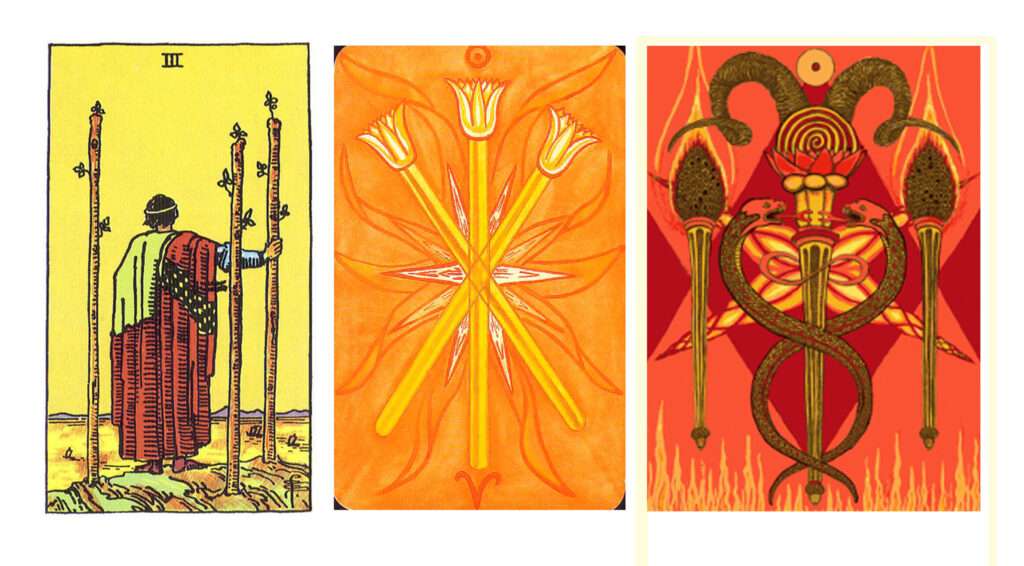
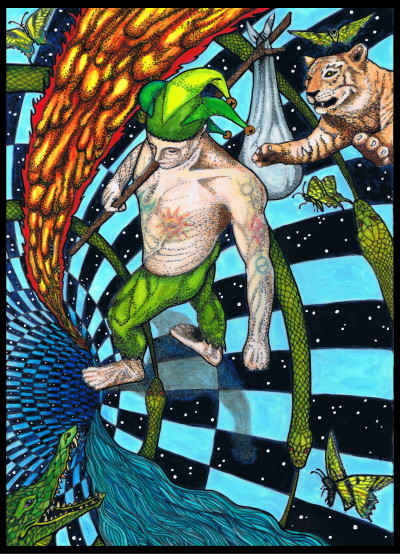
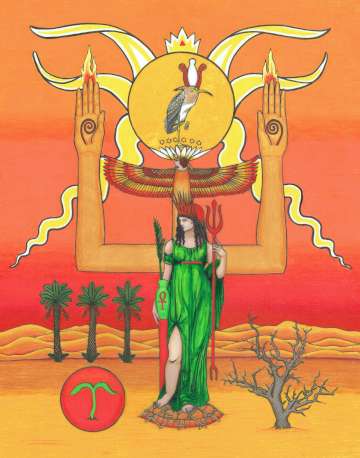
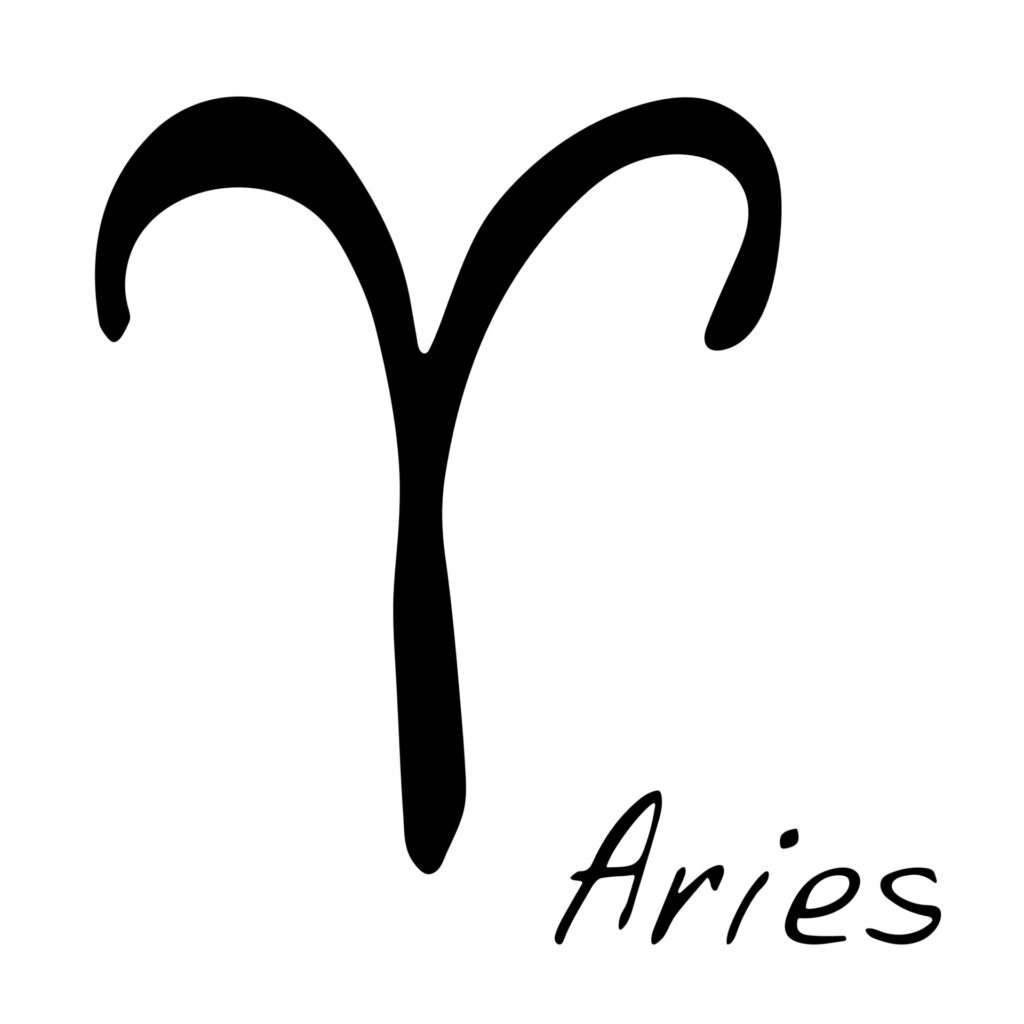
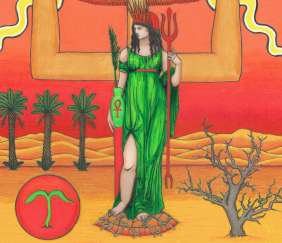
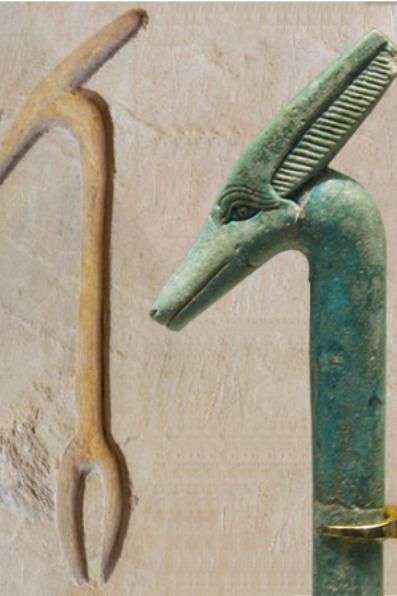
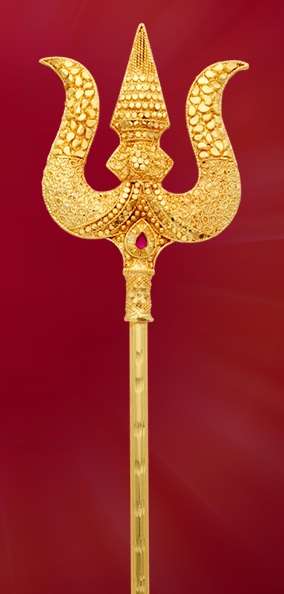


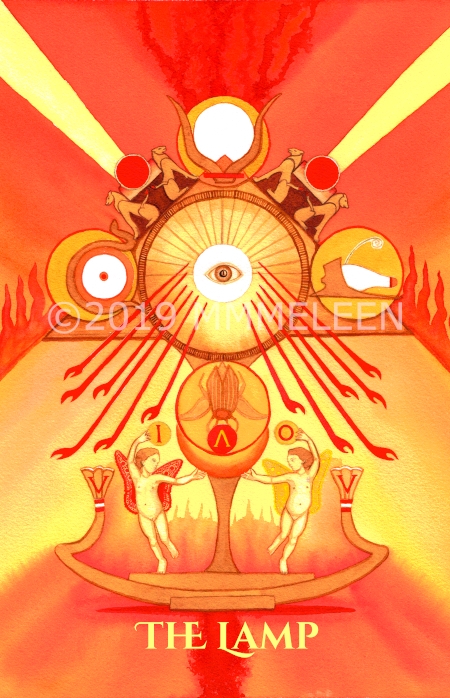
Thank you for this work, and including your decan walk. It has been my practice for several years to walk this cycle, connecting life experiences with the decans. I’ve also profited from Counting the Omer, a Kabalistic experience of a specific cycle in the wheel of the year. I had an art project, my typical journaling for each decan, and the cycle was flowing beautifully for each ten day cycle. Then in Sagittarius I hit a really disrupted patch, while I could manage the journaling and meditative aspects in a difficult illness with my life partner, my art project was not completed in any cycle for the final quarter. I’ve started again in the new cycle, picking up and continuing as best I can with another disruption facing surgery myself. I really profited from the effort of this particular opening of Taurus one. While I open every Tuesday in my first hour opening rites with the Orphic Hymn to Mars, this energy has always been a difficuly concept, I docus on the “sword of courage” but the destructive aspects in this lesser malefic us defintely one I need the innoculation to health to manage that point of the best elements balancing staying destruction and creating that swords to plough shares bit.
So happy you are doing this series! Decided to do a decan walk (my first one haha) with this deck on a whim, so your effort feels like a cosmic gift to me! Sending gratitude ☀️💕
Awesome, glad you are joining – feel free to share how it goes!
Thank you for sharing all this insight and knowledge. The details of your decks are fascinating.
Thank you! A lot of mind time went into the creation. None of it was done without thought!